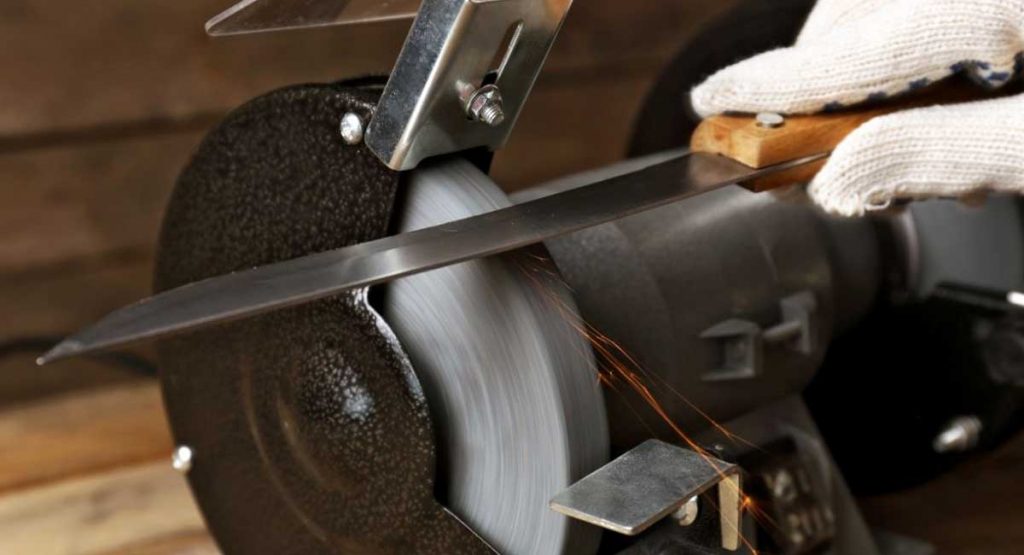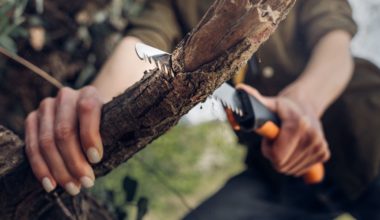When it comes to outdoor activities like camping and hiking, a knife, particularly a survival knife, is a necessity. A survival knife is a type of knife that can help you save your life or perform simple tasks, and finding the best steel for survival knife is a crucial part of ensuring your knife will perform when you need it.
For instance, if you’re stuck in the woods or taking a trip outdoors, a survival tool may not only save your life but could also help you overcome the basic tasks you’ll face in the great outdoors. Survival knives are multifunctional tools that can be used in your everyday life or in unexpected situations.
Background of the Survival Knife
For centuries, humans have relied on knives and other cutting tools to meet the fundamental needs of survival: food, water, fire, and shelter.
In generations past, knives were essential for day-to-day survival. Over the years, the need for knives for survival dwindles and disappeared as people became more domesticated. The modern hunting knife was created by Webster L. Marble and have since evolved into specialized blades and uses.
During the Second World War, soldiers and hunters used knives to survive. It was during this time that people learned about the importance of survival knives, and that’s how those knives appeared in the spotlight and now they’re frequently used for several purposes.
Best Steel For Survival Knife
A perfect survival knife can give a survivalist years of use when taken care of, but it can be difficult to find a knife made of steel that doesn’t break easily and keeps a sharp edge. It’s important to choose the right steel as the wrong steel will eventually lead to failure or dull edges.
For the production of knives, different kinds of steel may be used and the prices vary. To understand these steels, you need to have a basic understanding of steel and how steel selection can affect the performance of a knife.
Some knife blades may be particularly hard, but they will crack or break if you drop them on a hard surface. In contrast, a blade can be extremely stiff and bendable, but it will be difficult to hold its edge.
Of course, the performance of a knife doesn’t depend solely on the steel used in the blade. Heat treatment, blade shape, handle ergonomics, and material all affect a knife’s performance for a particular job.

Carbon Steel
High carbon steel grades are great for making knives as they will provide the blade with the strength and hardness to withstand wear and impact. However, proper heat treatment must be performed on high carbon steel.
If used too quickly, the knife will become too brittle and may break, while if left to normal or annealed steel, the knife will be too soft and the knife won’t hold its sharp edge for long.
Carbon steel knives can also rust easily. This is because carbon steel doesn’t contain some alloys that help protect it from corroding. Care should be taken to make sure that the carbon steel blade doesn’t corrode.
Tool Steel
Tool steel is the most common choice for knife making. Tool steels, mostly carbon steels, have some alloys that can increase their properties. The alloys generally increase the corrosion resistance of steel, but not to the extent of stainless steel.
The tool steel used as the tool constituent is A2. Although it cannot achieve high hardness like some tool steels, it exhibits great toughness. That said, A2 can be susceptible to corrosion if precautions aren’t taken.
D2 is a great option with better corrosion resistance and better edge retention, though this comes at the expense of toughness. M2 is a very good tool steel for retaining knife edges.
Stainless Steel
Stainless steel is another common knife metal. The benefit of stainless steel is the presence of chromium and some other alloys that helps keep the metal safe from corrosion.
Stainless steel survival knives are usually made from martensitic or ferritic stainless steel. To produce knives with good edge strength, ferritic and martensitic stainless steels must have enough carbon that high hardness can be achieved. Grades like 440 and 420 are commonly used to make knives.
Austenitic stainless steel such as grade 316 can sometimes be used to make knives, however, these steels aren’t hard enough to guarantee a lasting and strong edge. The use of low-level carbon austenitic steels, like 304L, must not be used when manufacturing knives unless the corrode-resistance is a primary concern.
How to Choose the Best Steel for Survival knife
The quality of steel for survival knives is determined by different factors.
Corrosion Resistance
Many survivalists want to select the best steel for their specific needs. Even after months of carrying, a knife with excellent edge retention will vaporize the board. For survival knives, toughness is important.
If you’ll be using the knives in high-humidity conditions, Corrosion Resistance should be a top priority.
Sharpness
The sharpness of your survival knife is the most important factor. Sharpening certain steels with a sharpening stone is a simple and painless process.
However, sharpening tougher steels can take an entire day. When you’re in a survival situation, being able to sharpen your knife can be the difference between life and death. A knife that’s simple to sharpen will usually have poor edge retention.
Toughness
When exposed to impact, torsion, and twisting, strong blade steel resists cracks and ultimate failure. Strong blade metals are perfect for hiking or survivalist situations.
Things to Consider Before Buying a Survival Knife
As with anything, you get what you pay for. Survival knives are made out of different materials and for different purposes, and if you get a cheap knife, you can expect it to not last through multiple uses. If you invest in a more expensive survival knife, you can likely expect it to last through years of use, or at least have multiple survival uses like hacking, sawing, and cutting.

If you’re on the market for a survival knife but aren’t sure what to look for, this buying guide will help you decide. Here are a few considerations before buying a survival knife.
Tang
The first thing that you should consider before buying a survival knife is the tang of the knife. The tang of the knife is the non-specified, generally unexposed part of the blade that extends along with the handle. For survival knives, full tang is preferred which makes them robust and reliable. Therefore, before buying, look for those knives that have a full tang.
Design of Blade
The second thing that matters most while purchasing a survival knife is the design of the blade. There are many shapes and types of blades on the market, but for survival knives, the drop point blade is considered appropriate because of its wide range of uses.
Drop point blades are best for hunting, cutting, and slicing purposes. So make sure you check that the blade’s design is compatible to your needs before purchasing a survival knife.
Length of Blade
Another thing that must be kept in mind while buying a survival knife is the length of the blade. We know that smaller knives are way easier to carry but at some point, they may not be that useful out in the woods.
Depending on your needs, larger blades are generally preferred. You can use them for various purposes like cutting bushes, hunting, and chopping. Survival knives are intended to be used for multiple purposes, so make sure to buy a knife that has a greater blade length.
Blade Metal
One of the most important factors that should be taken into consideration is the type of blade metal. Survival knife blades are made up of steel, but what’s the best steel for survival knife? To manufacture survival knives, two types of steel are generally used. One is stainless steel, and the other is carbon steel.
Carbon steel is harder, so it’s more suitable for cutting wood. It’s also easily shaped and can be made sharp, but it’s quite susceptible to rust, so it needs to be cleaned with mineral oil to prevent rust.
Stainless steel is much more resistant to rust, but it’s also harder to sharpen and generally less durable than carbon steel. Due to stainless steel’s resistance to rust, if you are more often in wet environments you will likely need a blade made from stainless steel.
Comparing these two types of steel, the stainless steel edge is considered more durable and corrosion-free. That’s why stainless steel blades are considered appropriate for survival knives.
Folded Knife
A folded knife is easier to carry on a daily basis, while a knife with a fixed blade will serve you much better in a survival situation as a versatile and reliable tool. As a folded blade is made with two pieces joined together by a hinge, the possibility of it breaking is higher than if you had a solid piece of metal.
A knife with a fixed blade is difficult to carry around because it needs a sheath, so you may want to have a folding knife as a spare. However, a knife with a fixed blade is definitely an all-around better tool.
Right Size
Consider the size of the survival knife you need. If you go for a knife that’s too large and heavy for your surival gear, it will be uncomfortable to carry, it will interfere with you and slow down your work.
Survival knives that are too large are also difficult to use for more precise tasks such as skinning small game or carving out small traps and tools. On the other hand, a survival knife that’s too small isn’t suitable for more difficult tasks such as cutting or sawing wood and thick brush.
Sheath
Having a sheath is important for keeping your survival knife in good shape, helps to easily carry your survival knife, and and protects you from accidental cuts. Many people may overlook the cover, but getting it right is essential.
Most survival knives come with a sheath, and the perfect survival knife cover will generally include a belt loop so you can attach it to your belt, bag, or leg.
Common Survival Knife Uses
When you’re in a survival situation, a knife is a priceless tool. Survival knives are used for a variety of purposes such as cutting firewood, clearing out brush, defending yourself against predators, skinning game, and slicing through thick brush.
It can also be used for more leisurely tasks like carving art into wood or whittling a stick. A survival knife can be used to create other useful tools when you’re in a survival situation, such as bowls and spoons to make life in the wilderness just a little more comfortable.
A survival knife can aid in fire starting and can be dashed against a rock to create sparks. Beyond the common uses of a survival knife, these knives can help perform basic medical procedures such as draining blisters or removing infection.
Final Thoughts
It’s crucial to have a knife that’s versatile and capable of performing a variety of tasks in different survival situations. When choosing the perfect survival knife for your needs, keep in mind the environment you expect to be in and the tasks you’re capable of undertaking.
A survival knife is a tool that can assist you in challenging situations, and the best steel for survival knife is an important part in choosing the right knife for you. Knives made of tougher steel, like Carbon Steel, are best for survivalists who will be using their knives to cut away thick brush or perform other heavy outdoor tasks.


